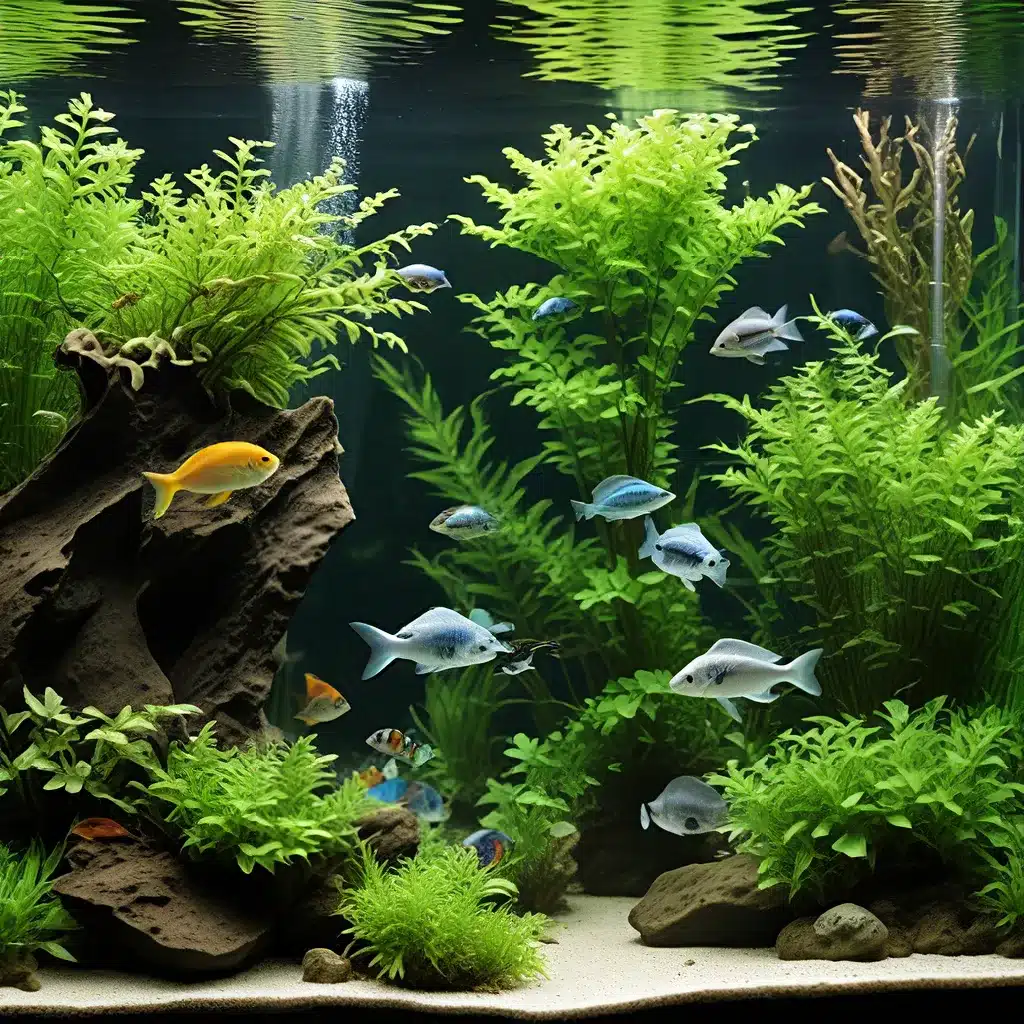
Maintaining a thriving aquarium ecosystem is a delicate balance, and the key to success lies in understanding and managing the intricate water parameters that support aquatic life. In this comprehensive guide, we will dive deep into the essential elements of aquarium water quality, equipping you with the knowledge and techniques to create a harmonious and healthy environment for your underwater inhabitants.
Mastering the Art of Water Testing
Effective water testing is the foundation of successful aquarium management. By regularly monitoring key parameters, you can identify and address any imbalances or fluctuations before they become problematic. Invest in a reliable test kit that can measure factors such as pH, ammonia, nitrites, nitrates, and water hardness. Familiarize yourself with the ideal ranges for the specific fish, plants, and invertebrates in your aquarium, and keep detailed records of your test results.
King Aquarium offers a wide selection of high-quality test kits and water analysis tools to help you stay on top of your aquarium’s health. Utilizing these resources, you can proactively identify and resolve any water quality issues, ensuring your underwater oasis thrives.
Balancing pH and Alkalinity
The pH level in your aquarium is a critical factor, as it directly impacts the health and well-being of your aquatic inhabitants. The ideal pH range can vary depending on the specific inhabitants in your tank, but generally, a pH between 6.5 and 8.0 is considered optimal for most freshwater species.
Maintaining a stable pH is equally important, as rapid fluctuations can be stressful and even fatal to your fish. To achieve this, monitor the alkalinity, or the water’s ability to resist changes in pH. Ideal alkalinity levels will help buffer the water, preventing sudden pH swings.
Strategies for Maintaining Ideal pH and Alkalinity:
- Use Appropriate Substrate: Choose a substrate that is compatible with your desired pH range, such as crushed coral or aragonite for higher pH or peat moss for lower pH.
- Perform Partial Water Changes: Regularly replace a portion of the water in your aquarium with fresh, dechlorinated water to help maintain the desired pH and alkalinity levels.
- Utilize Buffers and Additives: Carefully research and use pH-adjusting products or natural buffers, such as baking soda or marine salt, to fine-tune your water parameters.
- Monitor and Maintain Consistency: Continuously test your water and make gradual adjustments to keep pH and alkalinity within the ideal range for your aquarium inhabitants.
Controlling Ammonia, Nitrites, and Nitrates
Nitrogen compounds, such as ammonia, nitrites, and nitrates, are the bane of any aquarium enthusiast’s existence. These substances can quickly become toxic to fish, plants, and invertebrates if left unchecked. Understanding the nitrogen cycle and its impact on your aquarium’s ecosystem is crucial for maintaining a healthy environment.
Strategies for Managing Nitrogen Compounds:
- Establish a Mature Biological Filter: Invest in a high-quality filtration system that promotes the growth of beneficial nitrifying bacteria, which can convert ammonia and nitrites into less toxic nitrates.
- Perform Routine Water Changes: Regularly replace a portion of your aquarium’s water to dilute and remove accumulated nitrates, preventing them from reaching dangerous levels.
- Utilize Live Plants: Incorporate aquatic plants into your setup, as they can effectively absorb and metabolize nitrates, helping to maintain a balanced ecosystem.
- Avoid Overfeeding: Excessive food can lead to a spike in nitrogen compounds, so be mindful of your feeding habits and adjust portions accordingly.
Maintaining Optimal Water Hardness
Water hardness, represented by the levels of dissolved minerals such as calcium and magnesium, is another essential parameter to consider. The ideal hardness range can vary depending on the specific needs of your aquarium inhabitants, but generally, a moderate to hard water environment is preferred by many freshwater fish and plants.
Strategies for Achieving Optimal Water Hardness:
- Test and Monitor Hardness Levels: Regularly test your aquarium water to determine the current hardness and make adjustments as needed.
- Use Appropriate Water Conditioners: Incorporate water conditioners or additives that can alter the hardness of your water, either increasing or decreasing it to meet the requirements of your aquatic life.
- Consider Your Water Source: Understand the natural hardness of your tap water and how it may impact the overall water chemistry in your aquarium. Adjust accordingly to achieve the desired hardness range.
- Maintain Consistency: Avoid sudden changes in water hardness, as this can stress your aquatic inhabitants. Make gradual adjustments over time to ensure a stable and balanced environment.
Balancing Temperature and Dissolved Oxygen
Temperature and dissolved oxygen levels are two additional crucial factors in maintaining a thriving aquarium. Fish, plants, and invertebrates have specific temperature preferences and oxygen requirements, and it’s essential to create an environment that caters to their needs.
Strategies for Regulating Temperature and Oxygen Levels:
- Install Appropriate Heating and Cooling Devices: Use a reliable aquarium heater and, if necessary, a chiller or cooler to maintain the optimal temperature range for your aquarium inhabitants.
- Ensure Adequate Water Flow and Aeration: Incorporate circulation pumps, powerheads, or air stones to promote surface agitation and increase the dissolution of oxygen in the water.
- Monitor and Adjust as Needed: Regularly check the temperature and dissolved oxygen levels, and make adjustments to maintain the ideal conditions for your aquatic life.
By mastering the art of water parameter management, you can create a thriving aquarium environment that supports the health and vitality of your fish, plants, and invertebrates. Remember, consistency and attention to detail are key, as any imbalances can have far-reaching consequences for your underwater ecosystem.
Explore the wide range of aquarium products and resources available at King Aquarium to help you unlock the secrets of successful aquarium maintenance. With the right tools and techniques, you can transform your aquarium into a captivating, low-maintenance oasis that will bring endless joy and fascination to you and your aquatic companions.

